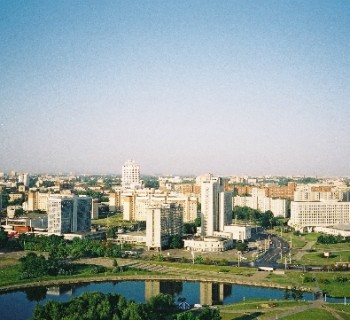Coat of arms of Brest

Among the official symbols of the regional cities of Belarus, the coat of arms of Brest is considered the most laconic and stylish. Its description will take only a few lines, but the history of the appearance of this heraldic symbol, like the history of the city itself, has more than one century.
Magdeburg Law
The modern image of the coat of arms of Belarus has been officially used since June 1, 1994, that is, relatively recently. The main details of the heraldic symbol:
- baroque shield painted in azure color;
- a silver bow with a stretched bowstring;
- a silver arrow with an upward pointing arrow.
It is clear that such a coat of arms could not have been used during the years of Soviet power, that is, from 1917 to the beginning of the 90s, until Belarus gained independence. Heraldry experts say that this symbol is one of the oldest.
This is also confirmed by archivists and museum workers, since the city seals dating back to the Middle Ages have survived, where there is just such an image - a stretched bow.
Competitor coat of arms
Brest in the middle of the 16th century was the largest handicraft and trading settlement in the territory of the Grand Duchy of Lithuania. Accordingly, he was free, had Magdeburg law and city official seals..
The seals of Brest with a drawn bow and arrow have survived, but there are other images where instead of cold weapons there is a quadrangular tower. At one time, this architectural structure was located between the Mukhovets and Bug rivers, it was a kind of symbol of the city.
Both images were associated with defense, the protection of the city from external enemies, from the point of view of symbolism, they are identical. The choice of these particular attributes for the coat of arms is justified by the fact that Brest was at the crossroads of trade routes, at all times was too attractive for neighboring principalities and states.
In the middle of the 19th century, the city was called Brest-Litovsk. After joining the Russian Empire, the city received a new heraldic symbol from Emperor Nicholas I. It depicted a cape from the confluence of the already known rivers, the Bug and Mukhovets, on which you can see a circle of silver shields and a standard decorated with a double-headed eagle.
Currently, the city has returned to its original coat of arms, which adorns not only official documents, but also the streets of Brest. This symbol reminds townspeople and guests of courage, courage and bravery in the struggle for freedom..


